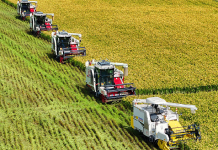ISLAMABAD: Pakistan should focus on large-scale mining of K2nite to capture the international market of dimension stones, said Imran Babar, a miner and gemmologist.
Talking to media, he said K2nite was extracted from the Karakorum Mountain Range only from April to August. However, he said no proper infrastructure existed to easily approach the mining areas. “Only mules are used to bring down the heavy K2nite stones,” he said, adding despite hurdles, K2nite was mined, albeit on a small-scale, due to its good demand.
He said K2nite featured a blend of black, white and grey colours with intricate patterns. “It is prized for its aesthetic qualities, durability and suitability for various construction and decorative applications – countertops, flooring, cladding and monuments.”
He said the government authorities should launch concerted efforts to promote mining of K2nite on a large-scale.
Sharing with media the importance, associated minerals and the geographical environment of K2nite formation, Muhammad Yaqub Shah, a principal geologist with an Islamabad-based mining company, said it was a prized commodity in both value-added and dimension stone forms, occurring abundantly in the vicinity of K2 Mountain. “This rock is usually white in colour having circular spots of bright blue azurite in various sizes. Sometimes green spots are also found on it due to the presence of another mineral called malachite, adding to its natural beauty.”
Yaqub said the textural features of K2nite were composed of plagioclase, alkali-feldspar, two-mica granite and quartz, while the azurite-bearing samples only divulged (less than) 80% of quartz and plagioclase fine-grained texture. “K2nite-bearing felsic rocks are frequently found in the debris of the Karakoram mountains. The blue spots in K2nite are due to copper-bearing azurite – which can be processed to extract copper and even rare earth minerals/metals. The reason is that the geological environment favourable to form K2nite is ideal for the formation of a variety of important minerals, including rare earth elements (REEs).” However, he said the main hurdle was the lack of systematic policymaking, infrastructure development and the establishment of value-addition units.
Talking to media about the commercial value of K2nite, Abdul Bashir, chief geologist with Koh-i-Daleel Minerals Company (Pvt) Ltd, a Balochistan-based firm, said the mineral was named after the K2 Mountain. “Its bluish colour is due to a copper oxide mineral – azurite. Its occurrence indicates the existence of other metallic minerals – gold, silver or rare earth minerals. Sometimes, the presence of malachite mineral causes greenish stains.”
Likewise, he said the same type of rocks or a little different in colours – azurite and malachite – also occurred in different areas of Balochistan, including Chagai, Ras Koh, Wadh, Muslim Bagh and Zhob, and Waziristan region in Khyber Pakhtunkhwa. “The value addition of K2nite as a dimension stone is precious but its further processing to extract other minerals is far more prised. The government should facilitate in different aspects, especially infrastructure building, so that the mining of K2nite and other valuable minerals could be made on a large-scale.” –INP





